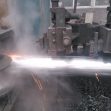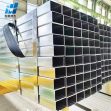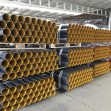What is the use of zinc aluminum magnesium square tube? Can zinc-aluminum-magnesium square tubes be welded by electric welding?
1. What are the uses of zinc-aluminum-magnesium square tubes?
Zinc-aluminum-magnesium steel pipe products are mainly used in greenhouse construction. Oil and gas pipelines. Involving industrial and domestic water supply, gas supply, heating supply, oil supply and building hardware.
Zinc-aluminum-magnesium steel pipes have better corrosion resistance, which is several to more than ten times higher than that of galvanized sheets within a certain range. It has a low friction coefficient and stable friction characteristics, which is very beneficial to stamping. It can reduce the wear of the coating, thereby reducing the fraying and missing lines of the parts.
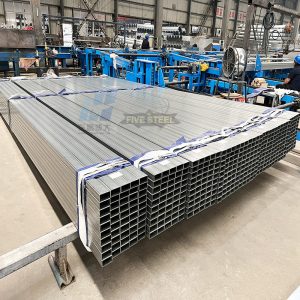
2. Can zinc-aluminum-magnesium square tubes be welded by electric welding?
Zinc-aluminum-magnesium square pipes are usually welded using TIG (Tungsten Inert Gas) welding method. This method uses argon gas for protection to avoid oxidation at high temperatures, thus maintaining the quality and strength of the weld. During the welding process, the following points should be noted:
1. Before welding, the welding surface should be cleaned to ensure that there is no rust, pollutants and other impurities;
2. Control the welding temperature to avoid material melting or deformation caused by excessive temperature;
3. Use appropriate welding materials, commonly used aluminum-aluminum welding wire;
4. Pay attention to your own safety when welding and wear appropriate protective equipment.
To sum up, zinc-aluminum-magnesium square pipes can be welded by electric welding, but proper welding methods and conditions need to be paid attention to to ensure the quality and strength of the weld.
3. What is the difference between zinc-aluminum-magnesium square pipe and hot-dip galvanized pipe?
The differences are mainly reflected in the following aspects:
1. Coating composition: Zinc-aluminum-magnesium square pipe is treated by coating a layer of zinc-aluminum-magnesium alloy on the surface of the steel pipe for anti-corrosion treatment, while hot-dip galvanized pipe is immersed in molten zinc liquid for galvanizing treatment.
2. Coating characteristics: Compared with traditional zinc coating, zinc-aluminum-magnesium alloy coating has better corrosion resistance and wear resistance, and can provide longer service life. Since hot-dip galvanized pipes are pure zinc coatings, their corrosion resistance and wear resistance are relatively poor.
3. Galvanizing method: Zinc-aluminum-magnesium square pipes use the electro-galvanizing process, while hot-dip galvanized pipes use the molten galvanizing process.
4. Price: Generally speaking, zinc-aluminum-magnesium square pipes are slightly more expensive than hot-dip galvanized pipes. Since zinc-aluminum-magnesium alloy has better performance, the price is higher.
To sum up, zinc-aluminum-magnesium square pipes have better anti-corrosion and wear resistance than hot-dip galvanized pipes, but they are more expensive. The choice of which pipe material to use should be determined based on the specific use environment and needs.
4. Density of aluminum, zinc and magnesium?
The density of aluminum-magnesium alloy is 2.66 g/cubic centimeter.
The densities of aluminum and magnesium are: 2.70 and 1.74 respectively. The density of aluminum-magnesium alloy can be calculated based on their contents. Aluminum-magnesium alloys generally contain about 4% magnesium, so the density is: 2.70×96%+1.74×4%=2.66 (g/cubic centimeter).
The main element of aluminum-magnesium alloy aluminum plate is aluminum, and a small amount of magnesium or other metal materials is added to strengthen its hardness. Aluminum alloys with Mg as the main added element are also called rust-proof aluminum alloys because of their good corrosion resistance. Because it is metal itself, its thermal conductivity and strength are particularly outstanding.
5. Zinc, aluminum and magnesium ratio?
Hello, the zinc-aluminum-magnesium ratio refers to the relative content of the three elements zinc, aluminum, and magnesium in the alloy. Different alloys require different zinc-aluminum-magnesium ratios to meet different performance requirements. Some common zinc-aluminum-magnesium ratios are as follows:
– Zn 3.5-5.5%, Al 2.5-4.5%, Mg 0.3-1.5%: High-strength alloys commonly used in aerospace, automobiles and sports equipment.
– Zn 4.5-6.5%, Al 1.5-3.5%, Mg 0.2-1.2%: High-strength alloys suitable for aerospace, automobiles and bicycles.
– Zn 2.5-4.5%, Al 6.5-8.5%, Mg 0.2-1.2%: High-strength alloys used in aerospace, automobiles, bicycles and industrial machinery.
– Zn 8.0-10.0%, Al 0.4-1.2%, Mg 0.05-0.5%: High-strength alloys suitable for bicycles, automobiles, aerospace and other fields.
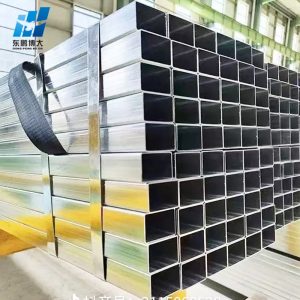
6. What is the difference between zinc-aluminum-magnesium plate and aluminum-magnesium-manganese plate?
The main differences are:
1Durability varies. Aluminum magnesium manganese plate has good corrosion resistance because it can form an aluminum oxide film with the atmosphere, giving it a lifespan of up to 50 years.
2The strength and stiffness are different. Although the strength and hardness of the aluminum in the aluminum-magnesium-manganese plate does not have an obvious yield point, it also contains magnesium and manganese, so it has a certain strength and stiffness.
3 The price/performance ratio is different. Aluminum-magnesium-manganese panels are cost-effective, lightweight, waterproof, easy to bend, and have good three-dimensional visual effects.
7. What is the composition of aluminum, zinc and magnesium?
An aluminum alloy product. The basic composition of the alloy is, by weight%, about 6.5 to 9.5 zinc (Zn), about 1.2 to 2.2% magnesium (Mg), and about 1.0 to 1.9% copper (Cu), preferably ( 0.9Mg-0.6) ≤Cu≤(0.9Mg+0.05), about 0~0.5% zirconium (Zr), about 0~0.7% scandium (Sc), about 0~0.4% chromium (Cr), about 0~0.3% Hafnium (Hf), about 0 to 0.4% titanium (Ti), about 0 to 0.8% manganese (Mn), the balance is aluminum and other incidental elements
8. What is the national standard for zinc, aluminum and magnesium thickness?
Galvanizing thickness standard requirements 1. If the thickness of the workpiece is greater than or equal to 6 mm, the average thickness should be greater than 85 microns, and the local thickness should be greater than 70 microns;
2. If the thickness of the workpiece is less than 6 mm and greater than 3 mm, the average thickness should be greater than 70 microns, and the local thickness should be greater than 55 microns;
3. If the thickness of the workpiece is less than 3 mm and greater than 1.5 mm, the average thickness should be greater than 55 microns, and the local thickness should be greater than 45 microns; this standard does not include coatings that have been centrifugally separated and zinc coatings on cast iron parts. For details, please refer to GB/T. 13912-2002 National Standard
9. What is the difference between zinc, aluminum, magnesium and aluminum?
The comprehensive mechanical properties of zinc-aluminum alloy are close to those of brass. They can be cut at higher cutting speeds and deeper cutting depths, and are widely used in small metal parts.
Magnesium-aluminum alloy is one of the alloys, with a general density of about 1.8gcm-3. The low density of the alloy of magnesium and aluminum improves its specific performance. Magnesium-aluminum alloy has good strength, rigidity and dimensional stability.
Therefore, the difference between zinc-aluminum and Alcoa: the comprehensive mechanical performance of zinc-aluminum alloy is close to that of brass. It can be cut at higher cutting speeds and deeper cutting depths and is widely used in small metal parts. Magnesium-aluminum alloy is one of the alloys, with a general density of about 1.8gcm-3. The low density of the alloy of magnesium and aluminum improves its specific performance. Magnesium-aluminum alloy has good strength, rigidity and dimensional stability.
10. What is the difference between galvanized aluminum-magnesium and aluminum-magnesium-zinc?
1. Super corrosion resistance: Al, Mg, Si and other alloying elements are added to the coating of hot-dip galvanized aluminum-magnesium steel plates, which greatly improves the corrosion inhibition effect of the coating. Compared with ordinary galvanized products, the coating requires less but can achieve historic corrosion resistance. Excellent corrosion resistance, 10-20 times that of hot-dip galvanized steel.
2. Self-repairing: The special alloy coating of 3 magnesium 11 aluminum + zinc can repair the cutting surface of the saw plate. That is, the coating components around the cutting curve can continue to dissolve after cutting, forming mainly zinc hydroxide, alkaline zinc nitride and hydrogen. A dense protective film composed of magnesium oxide, etc. This protective film has low conductivity and has an isolating and inhibiting effect on the continued corrosion of the cutting surface.
3. Long life: Due to the super corrosion resistance and the corrosion-resistant self-healing effect after cutting, the service life of components made of hot-dip galvanized aluminum-magnesium steel plate and alloy coated plate will naturally be very long. Under normal circumstances, the steel factory warranty Red rust will not appear for 30 years, and it can reach more than 1 year under ideal conditions.
4. Easy to process: The alloy layer of zinc-aluminum-magnesium steel plate is more precise than that of galvanized plate, and the coating hardness is 16-180Hv; therefore, the coating peeling off is not easy to occur during stamping processing.
Tel: +86 18202256900 Email: steel@fwssteel.com


